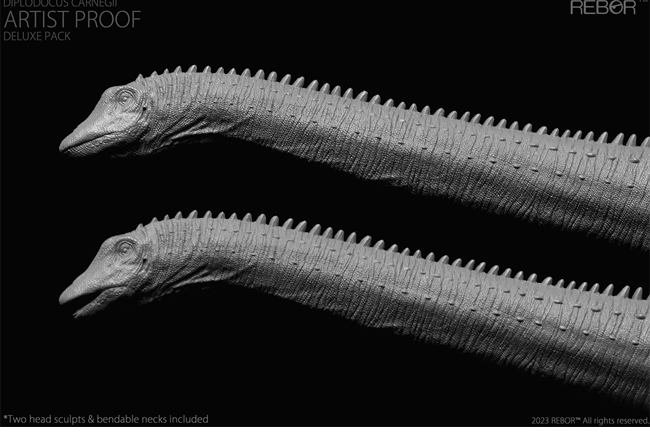Mike and Sue from Everything Dinosaur visited the London Natural History Museum gardens and photographed Fern the Diplodocus. The bronze Diplodocus on display is a copy of “Dippy” the famous Diplodocus exhibit that was on display in the Hintze Hall. Hintze Hall is the largest public gallery space in the Museum. The Diplodocus exhibit was removed in 2017 and replaced by “Hope” the skeleton of a twenty-two-metre-long Blue whale that is suspended from the ceiling.
To read a blog post from 2017 about the refurbishment of Hintze Hall: A Whale of a Time at the London Natural History Museum.
“Dippy” a Diplodocus cast presented to the London Natural History Museum in 1905 embarked on a tour of the UK. However, plans were in place to include a statue based on this exhibit in the gardens that surround the iconic building. The gardens tell the story of evolution and provide a green space away from the hustle and bustle of the city.
Fern the Diplodocus
The project to erect a bronze Diplodocus statue outside enabled palaeontologists and engineers to correct some of the mistakes in the original Hintze Hall “Dippy”. For example, the bones were realigned to give the bronze statue a more natural stance. The position of the hip bones was also changed so as to bring them into a more natural position. In addition, the feet were placed in a more anatomically accurate position.
Mike from Everything Dinosaur commented:
“Dinosaurs walked on their toes. They have a digitigrade stance. When the bronze Diplodocus statue was being cast and assembled the palaeontologists were able to supervise the positioning of the feet. The were able to pose the feet in a more anatomically correct position. Sauropods like Diplodocus did not have their feet flat against the floor in a plantigrade stance. This was seen in the old “Dippy” exhibit. Instead, the feet of the bronze cast have been raised slightly. The foot has been arched up slightly because when Diplodocus roamed the planet in the Jurassic, it had a big pad of tissue under each foot, similar to the foot pad of an elephant. These pads helped to support the dinosaur’s huge weight.”

A close-up view of the head of Fern the Diplodocus statue on display in the gardens of the Natural History Museum London. Picture credit: Everything Dinosaur.
Picture credit: Everything Dinosaur
Adjusting the Atlas
The replica of Diplodocus known as “Dippy” had another error in its construction. The small vertebra in the neck closest to the skull was erected upside down. This bone in the neck (C1 vertebra) is called the Atlas. It connects the skull to the spine. When creating and assembling the bronze statue, museum staff were able to ensure the Atlas was orientated the right way up. For a dinosaur with such a long neck, it is important to get the cervical vertebrae correct.
Rebor recently introduced a beautiful Diplodocus (D. carnegii) model. This model, known as “Artist Proof”, was supplied with two interchangeable necks. Collectors were encouraged to paint their own models.
The picture (above) shows the incredible Rebor Diplodocus figure “Artist Proof”. It is an amazing replica of this famous Late Jurassic sauropod.
To view the range of Rebor models and figures in stock: Rebor Figures.
Mike from Everything Dinosaur added:
“Fern the Diplodocus attracts hundreds of thousands of visitors. However, few people know how the original 1905 cast was altered when this statue was erected. It is a most imposing exhibit. Moreover, the gardens are often less crowded, especially early in the morning, compared to the Museum. This permits visitors to get a lot closer to an iconic Diplodocus.”
The award-winning Everything Dinosaur website: Prehistoric Animal and Dinosaur Models.



Leave A Comment